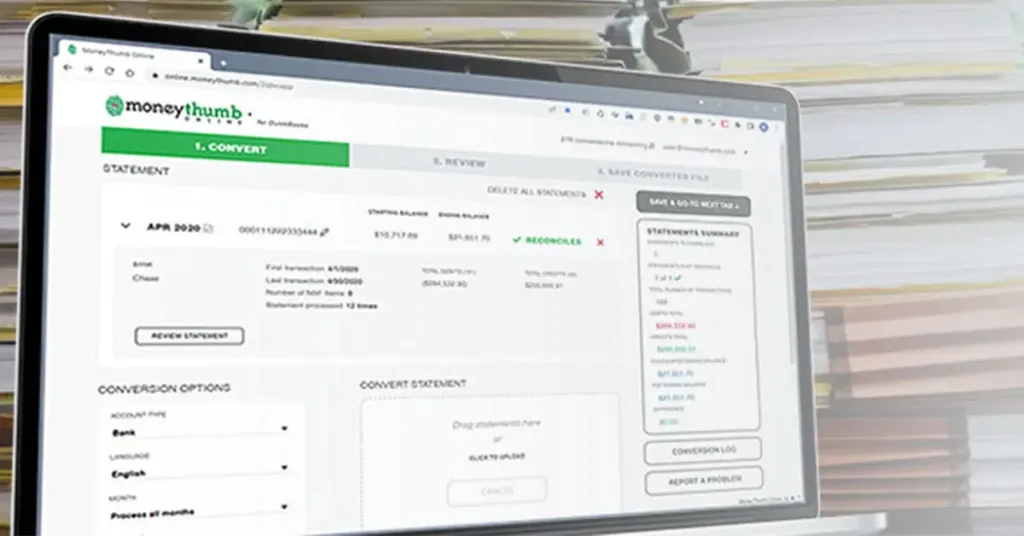Saving for retirement is not just about setting aside money for old age; it’s about giving yourself the ability to live on your terms when you’re no longer working. Many people underestimate how much they’ll need or overestimate how long they’ll be able to work. A good retirement plan helps prevent financial stress later in life and secures a stable future.
This guide offers a full breakdown of how beginners can get started with retirement savings, step by step. No jargon. No fluff. Just useful, real-world guidance.
Why Saving Early Makes a Big Difference
The single most important factor in retirement saving is time. Starting early, even with a small amount, can make a huge impact thanks to compound growth.
Example:
Let’s say you start saving $150 a month at age 25, and your investments grow at 6% annually. By the time you’re 65, you’ll have approximately $300,000.
If you wait until 35 to start and save the same amount monthly, you'll end up with around $154,000 by age 65. That’s almost half the amount for a 10-year delay.
Even if you can’t afford much, starting with $50–$100 a month builds the habit and lays the foundation for long-term success.
How Much Should You Save? Start With a Goal
There’s no universal figure for everyone. But here’s how to estimate:
1. Consider Your Retirement Age
Most people aim to retire between 60 and 67. The earlier you retire, the more you’ll need saved, since your money has to last longer.
2. Estimate Monthly Spending in Retirement
Use your current monthly expenses as a reference, then subtract expenses that may not exist in retirement (e.g., commuting costs or children’s education). Add new costs, like increased healthcare needs or hobbies.
3. Adjust for Inflation
A dollar today won’t have the same value in 30 years. Assuming a 3% average inflation rate, you’ll need more money in the future to maintain the same lifestyle.
4. Consider Other Income
Will you receive a pension? Social Security? Rental income? Subtract these from your target monthly amount to determine how much your savings must cover.
Example:
You want $4,000/month in today’s dollars. Social Security might cover $1,500. That leaves $2,500/month needed from your savings.
Understand Retirement Accounts
Retirement savings accounts give you tax benefits and help your money grow over time. The options available depend on where you live, but here are the main types in the U.S.
1. 401(k) or 403(b) Plans
- Offered by employers.
- Contributions are taken directly from your paycheck.
- Traditional 401(k): Contributions reduce taxable income now, and taxes are paid in retirement.
- Roth 401(k): Contributions are made with after-tax dollars, but withdrawals in retirement are tax-free.
- Many employers offer a matching contribution; take full advantage of it if available.
2. IRA (Individual Retirement Account)
- For individuals without employer-sponsored plans or who want to supplement them.
- Traditional IRA: Tax-deductible contributions (depending on income), taxed on withdrawal.
- Roth IRA: Contributions are not deductible, but earnings and withdrawals are tax-free in retirement.
- Contribution limits apply, and they’re lower than 401(k) limits.
3. SEP IRA / SIMPLE IRA
- Best for self-employed individuals or small business owners.
- Higher contribution limits than traditional IRAs.
Automate Your Savings
One of the best things you can do is automate your savings. Set up direct deposit or automatic transfers to your retirement account. This way, you treat your savings like a regular bill, non-negotiable and consistent.
Benefits of automation:
- Removes the need to decide monthly.
- Reduces the chance of skipping a contribution.
- Helps you stay consistent even when life gets busy.
Even small amounts saved regularly add up over time.
Open a Retirement Account and Start Contributions
Once you understand which account is right for you, open one through your employer or a trusted financial institution. If your employer offers a 401(k), especially with matching contributions, that’s usually the best place to start.
Steps to get started:
- Contact HR to enroll in your workplace plan.
- Choose a contribution percentage starts with at least enough to get the full employer match.
- Select your investment options based on your risk tolerance and timeline.
If you're self-employed or your job doesn’t offer a plan, open an IRA (Roth or Traditional) at a brokerage firm.
Automate Contributions
The easiest way to stick with retirement saving is to automate it. Automatic payroll deductions or recurring transfers from your checking account ensure that you save consistently without having to think about it each month.
Why it works:
- Reduces the temptation to skip months.
- Builds the habit of saving.
- Keeps you on track toward long-term goals.
Even if you start with a small amount, say, $100 per month, it adds up over time. You can always increase the amount later.
Learn the Basics of Investment Growth
Retirement accounts are not just savings accounts. They are investment vehicles. The money you contribute should be invested in a mix of assets stocks, bonds, and possibly other options, so that it can grow over time.
Key investment principles:
- Diversify: Spread your money across different asset types.
- Time Horizon: The younger you are, the more risk you can generally take.
- Low Fees: Choose low-cost index funds or ETFs to avoid losing money to management fees.
Example: A person investing $200/month from age 25 to 65, earning a 7% return, could retire with around $525,000. Wait until 35 to start, and the final amount drops to around $244,000.
Understand Employer Matching
If your job offers matching contributions on a 401(k), that’s essentially free money. For example, if your employer matches 100% of the first 4% you contribute, you should aim to contribute at least that much to take full advantage.
Failing to claim the match is like turning down part of your salary.
Increase Contributions Over Time
Most people don’t start off contributing the maximum. But once you’ve built the habit, try to increase your contribution by 1% each year or every time you get a raise. This gradual increase won’t hurt your budget but will greatly help your future.
How to do it:
- Set reminders for yearly contribution reviews.
- Use automatic increase tools if available through your plan provider.
- Prioritize retirement savings over lifestyle inflation.
Avoid Early Withdrawals
Taking money out of your retirement account early can hurt you in two ways: taxes and penalties. In most cases, withdrawing before age 59½ triggers a 10% penalty on top of regular taxes. More importantly, it derails your long-term growth.
Exceptions may include:
- First-time home purchase (Roth IRA only)
- Certain medical expenses
- Higher education (IRA only)
But even when allowed, early withdrawals should be a last resort.
Track Progress and Adjust as Needed
Retirement planning is not a set-it-and-forget-it process. Life circumstances change. So do income levels, family needs, and market conditions. Review your accounts at least once a year and adjust where necessary.
What to monitor:
- Are you on track to reach your target savings amount?
- Do your investments match your risk tolerance?
- Can you increase your contribution this year?
Use statements, dashboards, and financial planning tools to stay on top of your progress.
Consider Talking to a Financial Advisor
While many people can set up their own retirement plans, working with a professional can help you understand complex tax rules, asset allocation, and income planning. Look for a fiduciary advisor, someone legally required to act in your best interest.
They can help with:
- Creating a customized savings strategy
- Managing risks
- Planning income streams for retirement years
Retirement Savings for Non-Traditional Workers
If you're a freelancer, contractor, or small business owner, you still have excellent retirement saving options.
Options include:
- SEP IRA: Easy to set up and lets you save a percentage of your income.
- Solo 401(k): Ideal for higher-income earners; allows high contribution limits.
- Traditional or Roth IRA: Available regardless of employment type (with income limits for Roth).
Be sure to set up automatic transfers just as a salaried worker would.
Don’t Rely Solely on Social Security
Social Security is designed to supplement, not replace, your retirement income. It may provide 30%–40% of your needed funds, depending on your work history and when you claim benefits. That means your own savings will need to make up the difference.
Common Mistakes to Avoid
- Waiting too long to start: The earlier you begin, the easier it is.
- Not contributing enough: Aim to increase savings as income rises.
- Ignoring fees: High-cost funds eat into long-term returns.
- Cashing out when changing jobs: Always roll over your 401(k) to a new plan or IRA.
Conclusion: Take the First Step Today
Retirement saving isn’t about how much you know; it’s about getting started and staying consistent. You don’t need a large salary or an advanced understanding of finance. You just need to begin. If you can save even $50 or $100 a month now, that habit will grow over time. The more consistently you apply these principles, the more secure your retirement will be. Keep things simple. Automate what you can, review your progress once a year, and gradually increase your savings. It’s about building peace of mind one step at a time.
References
- https://www.bankrate.com/retirement/retirement-basics/
- https://www.scribd.com/document/478131886/Beginners-Guide-To-Personal-Finance-pdf
- https://www.nerdwallet.com/article/investing/retirement-investments-beginners-guide
- https://www.mysccu.com/learn/how-to-plan-for-retirement
- https://www.holden-partners.co.uk/a-beginners-guide-to-saving-money/
- https://www.investopedia.com/personal-finance-4427760
- https://www.adityabirlacapital.com/abc-of-money/beginners-guide-for-personal-finance
- https://www.thestreet.com/personal-finance/personal-finance-for-beginners
- https://www.m1cu.org/news/articles/the-basics-of-personal-finance-a-beginners-guide-to-financial-literacy
- https://www.investopedia.com/guide-to-financial-literacy-4800530
- https://www.nerdwallet.com/article/finance/personal-finance
- https://vocal.media/trader/money-mastery-the-beginner-s-guide-to-personal-finance-success
- https://www.businessinsider.com/personal-finance/investing/financial-plan





















Add comment